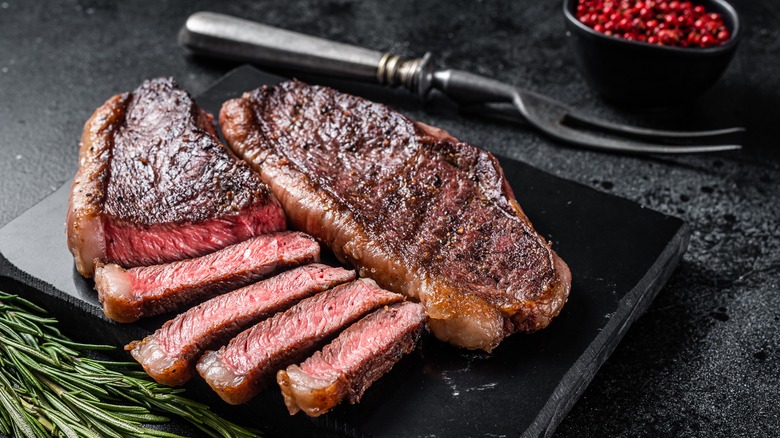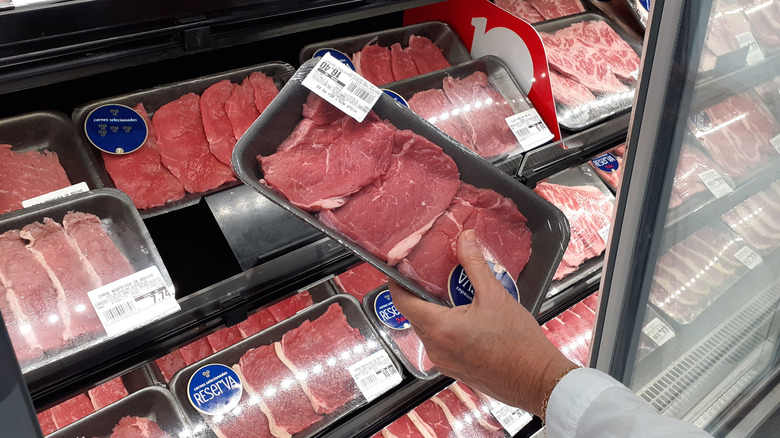Why Beef May Be More Expensive For Years To Come
The American beef market has been under strain for the last couple of years. In April 2021, Talk Business & Politics covered how the rise in corn and wheat prices was forcing cattle ranchers to raise the price of their livestock. The following July carried the same tune as Beef Magazine lamented how feed prices were still high and could still raise the price of beef.
Wheat and corn prices have been held in particular peril due to Russia's ongoing invasion of Ukraine. While a deal that would allow for the export of Ukrainian wheat had been reached in July, Reuters reported that the Russian missile strike against the port of Odessa caused wheat prices to jump once more. The issue is that since Ukraine and Russia are massive producers of wheat and corn, their absence has opened up a hole in the global market, according to Fortune.
Moreover, middleman companies like Tyson Foods may also be partly to blame. The reasoning is that the company has managed to increase the amount they profit despite complaining about the higher cost of feed. According to Reuters, the company even refused to submit to a subpoena issued by the New York Attorney General Letitia James that would have them turn over contractual agreements, prices, and profit margins. If record profits are being made, it is unlikely that the ranchers are seeing it as Tyson historically has a reputation for issuing stringent contracts that keep cattle prices down, as reported by The New York Times.
But what does the future of beef look like?
All that, though, is recent history and current events. The question is how these events are likely to impact the beef market in the years to come. Reuters wrote on August 8, 2022, that economists do not expect a return to normal for years to come. The issue is that ranchers have reduced the number of cattle they stock. This is because fewer cows require less feed.
Corn prices have started to decline since their spike this spring. However, the price for ground beef is still higher than it was last year by 10%. Even though rising feed costs and a reduction in cattle herd size have driven prices up, the demand for beef is such that companies like Tyson Foods can charge more. Yes, many Americans have turned to chicken as a cheaper source of meat-based protein. But, Tyson Foods claimed ground beef sales still grew by 1.3% in the second financial quarter of this year. So, it seems if Tyson Foods can charge higher prices for beef, higher prices they will charge.

